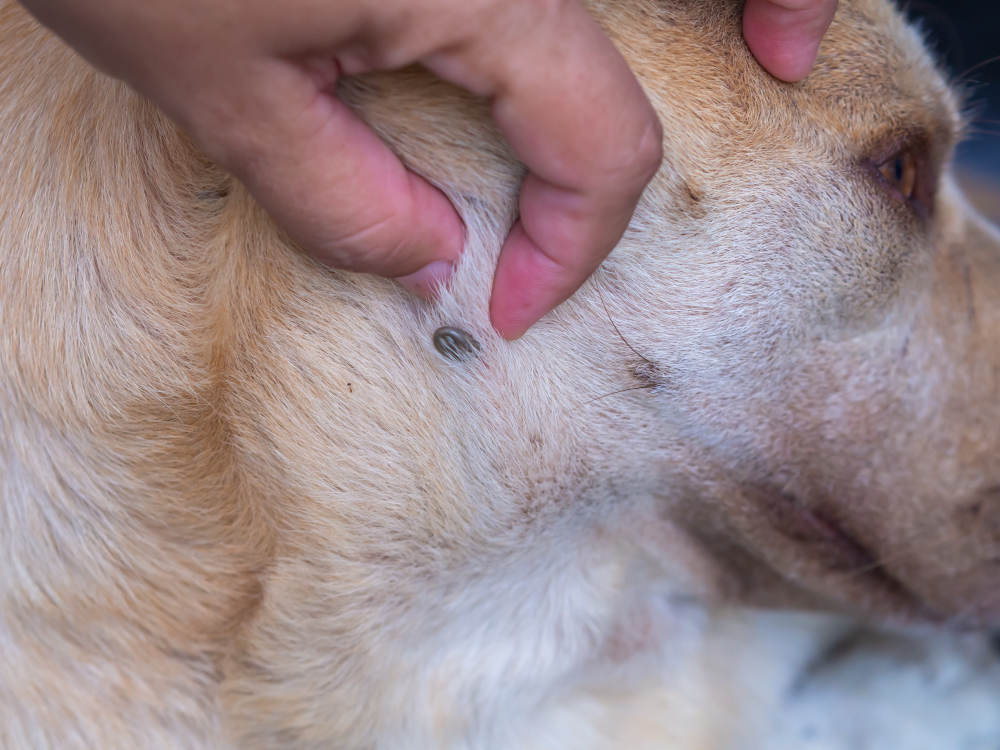Fleas are a common nuisance for dogs and their owners, causing discomfort and potential health issues for your furry friend. As an owner, it’s crucial to understand how to keep your dog flea-free and recognize the signs my dog has fleas. In this comprehensive guide, we will answer common questions about flea prevention and maintaining a healthy dog, including:
- Can you prevent your dog from getting fleas?
- What keeps fleas off of dogs?
- Do dogs always get fleas?
- Can I get fleas if my dog has them?
Flea Prevention: Methods to Keep Your Dog Flea-Free
Can you prevent your dog from getting fleas? The short answer is yes, but it requires consistent effort and the right approach. Here are some proven methods to prevent fleas on your dog:
- Regular grooming and bathing: Keep your dog’s coat clean and well-groomed by brushing and bathing them regularly. This helps to remove any potential flea eggs or adult fleas.
- Topical flea treatments: These treatments are applied directly to your dog’s skin, usually between the shoulder blades, and provide long-lasting flea prevention.
- Oral flea medications: Available in pill or chewable form, oral medications work systemically to kill fleas on your dog.
- Flea collars: Flea collars release insecticides that either repel or kill fleas, providing ongoing protection.
- Keeping a clean environment: Regularly clean your dog’s bedding, toys, and living areas to minimize the risk of flea infestations. Hygiene is very important to keep the place clean, but be careful, some chemicals can be toxic to dogs.
It’s essential to consult your veterinarian to determine the most appropriate flea prevention method for your dog, as individual needs may vary.
The Science Behind Flea Prevention Methods
So, what keeps fleas off of dogs? The various flea prevention methods mentioned above work in different ways:
- Topical treatments and flea collars typically contain insecticides that kill fleas on contact or disrupt their life cycle.
- Oral medications target the flea’s nervous system, leading to paralysis and death.
- Regular grooming and cleaning help to physically remove fleas and their eggs from your dog and their environment.
Identifying a Flea Infestation: Signs My Dog Has Fleas
It’s crucial to recognize the signs dog has fleas to take prompt action and prevent further issues. Common signs of fleas on dogs include:
- Excessive scratching, licking, or biting at their skin
- Red, irritated skin or hot spots
- Flea dirt (feces) in the fur, which resembles small black specks
- Hair loss or thinning
- Visible fleas on your dog or their bedding
If you suspect your dog has fleas, consult your veterinarian and implement appropriate flea treatment and prevention methods.
Flea Susceptibility: Do Dogs Always Get Fleas?
Do dogs always get fleas? Not necessarily, but certain factors may influence a dog’s susceptibility, such as breed, size, age, living conditions, and interaction with other animals. Regular flea prevention measures are vital to minimize the risk of infestations.
Flea infestations are more common in environments with poor hygiene conditions, as dirty surroundings provide a conducive breeding ground for fleas. Additionally, homes located near parks or wooded areas, where wild animals frequently roam, can also experience a higher risk of flea infestations. These wild animals can act as carriers, bringing fleas into the vicinity and increasing the chances of your dog being exposed to these parasites.
To protect your dog from fleas, it’s essential to maintain a clean living environment by regularly cleaning your dog’s bedding, toys, and living areas, as well as practicing good hygiene within your home. Moreover, if you live near parks or wooded areas, take extra precautions by checking your dog for fleas after outdoor activities and using veterinarian-recommended flea prevention methods to keep these pests at bay.
Signs of a Healthy Puppy and a Healthy Dog: What to Look For
Knowing the signs of a healthy puppy and a healthy dog will help you monitor their well-being and ensure effective flea prevention. Here are some key signs of a healthy dog:
Physical signs:
- Bright eyes
- Clean ears
- Shiny coat
- Healthy skin
- Ideal body weight
Behavioral signs:
- Playfulness and energy
- Good appetite
- Regular bowel movements
- Sociable and responsive
A strong connection exists between a healthy dog and effective flea prevention. By maintaining your dog’s overall health, you can better protect them from flea infestations.
Fleas and Humans: Can I Get Fleas if My Dog Has Them?
Can I get fleas if my dog has them? While fleas primarily target animals, they can also bite humans, causing itchiness and discomfort. To prevent and handle a flea infestation in your home, follow these steps:
- Treat your dog with veterinarian-recommended flea prevention methods.
- Regularly vacuum carpets, rugs, and upholstery to remove fleas and their eggs.
- Wash your dog’s bedding, toys, and any washable household items frequently.
- Use a flea spray or fogger in your home, as recommended by a professional exterminator.
Conclusion
In conclusion, flea prevention plays a crucial role in your dog’s overall health and well-being. By understanding the various prevention methods available, recognizing the signs my dog has fleas, and being proactive in maintaining your dog’s health, you can keep your furry friend flea-free. It’s important to consider environmental factors, such as poor hygiene conditions and proximity to parks or wooded areas, when assessing your dog’s susceptibility to fleas.
Always consult your veterinarian for personalized advice on flea prevention and maintaining a healthy dog. By following these guidelines and staying vigilant for any signs of fleas on dogs, you can provide a comfortable, happy, and healthy life for your canine companion. Moreover, keeping fleas at bay not only protects your dog but also contributes to a better living environment for your entire family.

